
If you are looking for a gentle, loving dog, that’s low-maintenance, big on cuddles and small on exercise needs, you can go no further than a Greyhound. Yes, you read that correctly.
For the uninitiated, the concept of sharing your home with a Greyhound might seem a little at odds with your beliefs about them. They need lots of exercise, right? Aren’t they an aggressive breed? They’re just an outdoors dog for racing, aren’t they?
You might be surprised to learn that the answer to all those questions is a resounding no. Greyhounds can make wonderful pets; they have a sweet disposition and are very loving.
Lisa White, founder of the Queensland-based Greyhound rescue group called Friends of the Hound says Greyhounds are an easy-going companion pet that will fit into most families with ease. “They are so adaptable. They’re a sensitive, soulful dog,” she says. “I have had so many people come back to me after taking home a rescue Greyhound and saying, ‘Lisa, this dog has changed my life’.
“They can also be quite quirky; they have different personalities,” she adds. “They can be goof balls and, at other times, very chilled out.”
Those who are fortunate enough to share their home with one of these gentle giants of the canine world say one of the best things about them is that there is more of them to love, but that doesn’t mean they are hard work to look after. Their short coat just needs a brush to keep it in check every now and then.
People think because they are racing dogs, Greyhounds need lots of exercise. Peter Flann, who founded the Sydney-based Greyhound Rescue along with his wife, Janet, says that this is a myth. “They’re couch potatoes that are capable of running 70km per hour in short bursts, but they mostly like to snooze,” he says.
Your greyhound will enjoy walks with you, but they don’t need lots of exercise; they’ll comfortably fit in with your routine.
It’s also not true that all Greyhounds will chase small animals. Lisa took her first rescue Greyhound Zada home to two cats, chickens, horses and two small children. “She fitted right in and was very much part of the family right away,” she says.
Lisa started her rescue group after spotting Zada in a cage at a pound in 2002. “I saw this beautiful blue face looking out at me and another volunteer said ‘that’s just a Greyhound, it’s not here to be rehomed, it’s here to be put down’,” says Lisa. “But I couldn’t forget about it; I kept seeing that poor dog’s face. I was online until 3am; I knew nothing about Greyhounds and what happens to them.”
After Lisa navigated her way through mountains of red tape, 18-month-old Zada found her new home with Lisa and her family.
The Greyhound is best described as a large, lean and muscular breed. They date back over 6000 years to ancient Turkey and became a highly sought-after dog used for hunting because of their speed and agility. Noblemen owned Greyhounds; pharaohs in ancient Egypt are also depicted with their graceful hounds alongside them.
Fast forward a few centuries and what started out as a friendly wager between friends who owned Greyhounds has developed into a money-making industry where dogs are used for racing and discarded when no longer needed.
If you’re looking for a low-maintenance pet that’s affectionate and rarely barks, these gorgeous pets tick all the boxes. “They’re such an easy-going companion pet and are a very people-focused dog,” says Peter.
Peter and Janet have rehomed around 1000 Greyhounds in the last decade. It’s fair to say, he knows a thing or two about these lovable lanky pets.
Many Greyhounds find their way to Greyhound rescue organisations because they aren’t winning races or they’ve reached their use-by date. “At age four and a half, they’re like a 35-year-old rugby player; not wanted as they’re past their prime,” says Peter.
There are many rescue groups that take in these pets from shelters or trainers and rehome them. “My advice is to put your faith in a rescue association and don’t source a Greyhound directly from a trainer,” he says. Rescue organisations put dogs through a transition program, get them socialised to the outside world, and work to match a particular dog to a particular family situation.
After reading this heartbreaking story, you might be thinking about welcoming a Greyhound into your family. Before you do, there are some things you need to know.
It’s not a good idea to let your happy hound off-leash in a public area — they pick up speed and momentum quite quickly. Greyhounds are taught to chase the fast-moving lure and they have good vision. It’s better to play it safe.
With their super-short fine coats and minimal body fat on their lean frames, Greyhounds feel the cold. They need a warm snug spot indoors to warm their toes by a toasty fire in winter, a cosy warm bed and a coat to wear outdoors in the cooler months.
Generally, Greyhounds have a clean bill health. Some may have issues with their teeth from chewing on bars; others may have pannus, a treatable eye disease. If your dog is diagnosed, they’ll need eye drops for the rest of their life.
A Greyhound’s nails need to be regularly trimmed as they grow quite quickly. Corns on foot pads are another issue that may affect Greyhounds. You’ll notice a small circular area that might be raised and your dog may limp. A vet check and various treatment options can fix the problem.
The idea of muzzling greyhounds was introduced many years ago to stop them injuring themselves during a race and, sadly, it’s assumed that ex-racing Greyhounds will chase small animals. Some states and councils still require Greyhounds to wear a muzzle in public places, so check with your local authority.
Zoumi is a beautiful black Greyhound with a sweet gentle disposition. Her human, Ausilia Cristiano, has been in Zoumi’s life for a year. Zoumi was a failed racer, a shy, timid dog who won Ausilia’s heart the moment she laid eyes on her.
“She’s got such a sweet, gentle disposition,” Ausilia says. “When we arrived home that first day she walked straight past chickens in my yard and didn’t bat an eyelid. She’s so well-behaved.”
Ausilia also cares for her elderly parents and Zoumi goes with her every day to visit them. She also loves playing and zipping around on the beach — it’s her favourite pastime! “Zoumi is my constant companion. She’s a beautifully natured dog,” says Ausilia.
If Patch’s human, Kristal, could think of one word to describe her dog Patch it would be “bubbly”. “He’s just so fun-loving and smiles all the time,” she says. “Patch bounds out of bed, wiggles and runs around in happy circles in the morning, follows me around for a bit, then lies on the lounge.”
He also enjoys hanging out with Bella, Kristal’s Great Dane X. Patch’s happy-go-lucky nature belies his former life as a racing hound. “He’s almost blind in one eye, missing some teeth, and has ear injuries. I was told he was kicked,” she says.
Kristal says Patch has become a much-loved family member. “He’s brought me so much joy; I look forward to coming home each day.”
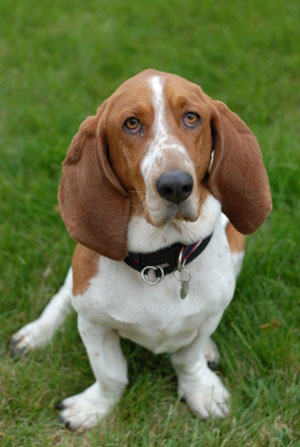
Personality: Loyal and lovable, the Basset Hound is a constant source of pleasure due to its character and appearance. It loves company and gets very attached to its family. It likes to play and can be quite the comedian.
Favourite activities: Although it looks dopey, the Basset loves and needs a daily outing and enjoys nothing more than having a good smell of all the new scents in its neighbourhood. It will want to spend time with its family and usually enjoys the company of other dogs.
Suitable for: Families and those who do not mind a bit of slobber around the house. Being very heavy, the Basset can be strenuous to walk so unless you have time to take your dog on an outing yourself, think twice about this breed as it may be tricky leaving it up to the kids. Keep in mind the Bassets big bark and make sure this is kept under control if you live in close proximity to neighbours.
Backyard requirements: Being a scent hound, the Basset will pick up on a scent and follow it, so a well-fenced yard is a must.
Hereditary diseases: The Basset should avoid walking up and down stairs as this can damage its long back. Being overweight can also affect the back. This breed can develop eye and ear infections if those areas are not kept clean. Be very aware of bloat.
Life with a Basset Hound is a daily dose of humour, love and excitement. After living with two of these amazing pooches, Michelle Segal would find it difficult making the switch to another breed.
My son kept talking about a hole in his world There is a gaping hole, he would lament, and it can only be filled by a dog! My three children were desperate for a pooch to join our family. Truth be told, I was more desperate than they were, but my concern was that, being a dog-a-holic, I would lose interest in my family with a dog in my life. I was afraid I would love the pooch more than my own children!
Then one day I saw the ad Basset pups available from reliable breeder. I couldn’t resist. My husband had grown up with a droopy-eyed Basset called Samson who liked me on and off and was in total control of my husbands bedroom, ensuring he got the bed most nights while Daniel slept on the dog mattress alongside it but he was gorgeous, no doubt about that. And so we took the plunge. We piled into the car and drove out to see the four-week-old pups, although I secretly knew there was no way we would be leaving the breeder that night without ordering a little Basset.
I was wrong. We left the breeder that night having chosen two of the little mites, to the complete horror of my husband.
Four weeks later, when the pups had reached a healthy eight weeks, we made the trek back to the breeder to collect our new family members. Our lives were never to be quite the same.
Two of our three children are twins, so taking on twin pups was nothing new for us. The toilet training was somewhat different, I have to admit, but dealing with the needs of two pups at once came fairly naturally to us. We called our boy Crosby my husband insisted he be named after the musician David Crosby, whose sluggish look slightly resembled our new Basset pup while our girl kept the name Isabelle, which the breeder had given her. She was a definite Izzy.
I have to say that living with a Basset Hound is a rather unique experience. The breeds comical appearance their droopy, blood-shot eyes, never-ending ears that get into everything, rolls of irresistibly squeezable skin, and huge paws that look very nice in their ballet first position stance is something that never ceases to amaze. You never quite get used to their unusual appearance and every day it is a refreshing sight for the eyes.
The Basset Hound has a reputation for being droopy and dopey not entirely untrue, although to believe they can be left to sleep the day away is foolish. The Basset was originally bred to hunt and like most dogs today it loves an outing and should be exercised regularly to maintain fitness and keep its weight under control.
Talking about weight, you’d have to go far to find a breed more obsessed with food than the Basset Hound, and if you are not prepared to make sure every bit of food in your kitchen is put away or pushed far back on your counters, don’t get a Basset. Just recently, a dinner guest in our house put his plate of chicken on the dining room table, but when he popped back into the kitchen for a minute, Crosby casually helped himself to my guests plate of food in one gulp before we could even react.
Bassets love their tucker, but too much of it can be lethal. The Basset is very prone to putting on weight and its long body makes it susceptible to severe back problems should it get too fat. Its short legs will also have trouble carrying the extra weight. Similarly, this breed is at high risk of bloat. (See box.)
The Basset, which comes from the word low set in French, was originally bred in France and was used as a hunter of small animals such as rabbits. With great endurance and its strong sense of smell, the Basset would follow the animal, driving it towards the hunter. Despite its sluggish look, the Basset proved to be one of the most effective hunters of its day.
Because it worked in packs and closely with its hunter-owner, the Basset became used to being surrounded by its family and still today the breed gets very attached to its pack or owners.
Being pack hounds, Bassets like to be with their family or to be with another dog, says Janet Beckman, President of the Basset Hound Club of New South Wales. They do like company.
Beckman bought her first Basset Hound in 1962 and has been closely linked with the breed ever since.
At that time, Cleo the Basset Hound was starring on TV and the breed was very popular, she remembers. Cleo was followed by Fred Basset and then they were used in ads for Hush Puppy shoes.
Beckman emphasises the need for good fencing to cope with the Bassets amazing sense of smell second only to that of the Bloodhound.
They have a wonderful sense of smell and can wander, she warns. They do need good fences and it should always be remembered that Basset Hounds will follow an interesting scent if a gate is left open.
You wouldn’t imagine the adorable Basset falling into the category of good watchdog, but this breed has an unbelievably deep, loud, reverberating bark which can scare off just about anyone.
They are good watchdogs as they have a large bark, says Beckman. But usually they will be more interested in the smell of the visitor than anything else.
Prospective Basset owners should be aware of this breeds bark as a constantly barking Basset can cause trouble with the neighbours.
Vets often describe the Basset as a small big dog. It is deep-chested and very solid, weighing between 25-30kg, sometimes more. They can be very heavy to walk something you may not be able to leave up to the kids and if you are house-proud and like your dog to live inside with you, be aware that the Basset does shed and slobber with each drink of water.
But if you want an adoring hound which will make you laugh, make you feel like the most special person in the world each day, and give you pot-loads of affection, you can’t go past the Basset. As Janet Beckman says, They are very lovable, like the best seat in the house!
Daily: Make sure your Basset has fresh water and a balanced daily diet. It should be exercised each day to keep it healthy and keep its weight under control.
Weekly: Ears and eyes need to be checked carefully in this breed. The Bassets droopy eyes need to be wiped free of any debris and its ears, which are susceptible to infection, should be checked regularly for any buildup of dirt. Give your Bassets coat a brush each week to reduce shedding.
Monthly: Bath when necessary but always do so on a warm day as the Bassets coat is thick and takes a long time to dry. If your Basset spends a lot of time on grass, his nails may grow rapidly and will need to be clipped more often.
Other: Gastrointestinal worming every three months for adults, more frequently for puppies, heartworming and vaccinations. Check your dogs body during tick season, especially amongst the folds of skin, and apply anti-tick treatments if necessary.
This nasty condition is common in Basset Hounds and will occur when the stomach gets distended with air and twists, cutting off blood flow. Ways to avoid it include feeding two smaller meals rather than one big one; cutting food into small pieces; and feeding the dog at least an hour AFTER exercise or an hour BEFORE exercise. If your dog does get bloat, rush it to a vet immediately.
For information on breeders and clubs in your state visit www.ankc.org.au
For the Basset Hound Club of New South Wales, visit http://bassethoundclubnsw.com
For the Basset Hound Club of Victoria, visit www.geocities.com/Heartland/Ridge/9458/
New Zealand readers can contact
The Wolfhound was so popular that the Irish kept exporting them until near extinction. The breed was saved in the late 19th century by an army officer, Captain G. Graham, who apparen’tly revived the current Irish Wolfhound by carefully breeding Great Dane/Wolfhound crosses, Deerhounds and Borzois. Maisie Vince from the Irish Wolfhound Club of Victoria and Stephen Gendle from the Irish Wolfhound Club of NSW are long-time admirers of the breed. Vince has had 27 years experience as a breeder and Gendle around 18 years experience. The Irish Wolfhound Club of NSW was established in 1976, followed not long after by the Victorian Club in 1979. Gendle cites anecdotal evidence of Irish Wolfhounds being used as hunting dogs in the mid to late 19th century in rural Australia, but the first records of imports, says Vince, come from the UK and date back to the 1920s and 1930s. Not much is known about the status or numbers of the breed between 1930 and 1970, until a Dr Phil Cunningham imported a pair from Ireland. Other imports followed and this was the start of the serious breeding and showing fraternity that we have now, Vince says. Breeders agree that despite the Irish Wolfhounds large size, they are unusually gentle. As with any pup, large or small, they can be boisterous, so supervision is required. And yes, Vince would recommend this breed to families with small children. One of Vince’s favourite videos is of her 18-month-old grandson crawling all over a 12-year-old bitch as she lay in front of the fire. She tells us that the babe and dog had never met before. The breed really is extremely tolerant and normally very protective toward children, she says. Irish Wolfhounds are fairly sound, but some of their health problems include bloat, bone cancer, heart problems, elbow dysplasia and liver shunt or Portosytemic shunt (PSS). Vince reckons that some lines are more prone to heart problems than others, as with epilepsy. All litters of pups should be screened for livershunt at six weeks of age or over, she says. While in the womb all the impurities in the blood are filtered through the mothers liver and after birth the shunt should shut down to allow the pups own liver to take over this function. When it does not shut down, all the impurities (high levels of ammonia amongst them) are allowed through into the main bloodstream. Any pups found to have this problem when tested are usually euthanased straight away. Some pups have been operated on in the USA, but it is an extremely expensive operation and in most cases just not possible. Vince believes that by breeding selectively and only from good and healthy lines, breeders hope to lower the risk of these diseases. If you are set on the idea of buying an Irish Wolfhound pup, please make sure you talk to either the club for more information, do your own research first or find a reputable, genuine breeder who will test for this disease, she emphasises. Yes, they just grow, grow and grow! They may be the tallest dogs, but they are not necessarily the heaviest breed. They tend to have narrow frames and are quite lean and muscular. Their growth rate is phenomenal, Gendle tells Dogs Life; they go from being 500 to 800 grams at birth to 40kg or 50kg within nine or 10 months. Most Wolfhounds don’t reach full height until they’re around two years old and if you are on a budget, be warned the Wolfhound pup has an appetite! Pups can eat twice as much as adult as they grow very rapidly, but the voracious eating should taper down to after about six months. An adult dog eats roughly the same portion as a German Shepherd would. Vince suggests that when you get your pup, you follow the breeders diet for a while before changing it gradually. She also suggests giving pups calcium supplements while they grow. Pups should be given high-quality food so they get all the necessary nutrition they need for their growing bodies. If you’re unsure, ask your breeder or vet for dietary suggestions. When dealing with the worlds largest sighthound dog, it is imperative that it obeys basic commands. Gendle says the Irish Wolfhound is generally a quick learner, but also gets bored or tired of obedience training faster than other breeds. Vince agrees, adding that they’re easily trainable when they want to be. Gendle suggests short periods of five to 10 minutes training repeated daily rather than an hour-long session will get the right results. An Irish Wolfhound must be able to respond correctly to your commands to sit, drop, stay and come. Being sighthounds, they love a chase. Make sure that you are able to call your dog back, he says. Gendle also points out that come is a handy command to have when you want to prevent your dog blindly running across a four-lane highway after a rabbit. So how soon should you start training? While most people start training their newest family addition at around eight weeks, Vince recommends lead training as early as five to six weeks. She used to lead train her litter of pups at an early age for show at three months. While you can’t walk your pup for long, there are many things you can do in your backyard or park. Lead training is a very good beginning and should be encouraged. Vince suggests you start by putting a light lead on the pup and let it run around to get used to having something around its neck, with you supervising, of course. Trying to control a 12-month-old Wolfhound on the lead for the first time is something to behold! she says. This four-legged export has been a great ambassador for its country and still is today. The Irish Wolfhound is an impressive sight and you can be sure that its majestic stature commands attention wherever it goes. Its placid nature, trustworthiness, loyalty, affection, gentleness with children and intelligence makes it an ideal companion for experienced dog families wanting something different. Irish Wolfhounds are loyal, placid, trustworthy with children, possess great stamina and have a calm disposition. Fairly low maintenance. Breeders recommend a brush once a day if you are fastidious, otherwise a once-a-week comb through should see your Irish Wolfhounds coat well looked after and shedding kept to a minimum. They shed year-round. Make sure you have a secure, six-foot fenced yard. This giant breed is adaptable and loves being indoors, but they are not suited to a flat or small yard due to their size. Warning: Some love to dig BIG holes! Large-breed puppies need exercise but consideration should be given when you think how much growing an Irish Wolfhound pup does. With all giant breeds, this one is no exception. Pups should not be subjected to vigorous exercise and that includes long bouts of walking, running and jumping. These exercises can exert too much force on their growing bones; you could do more harm than good over-exercising your pup. Hold out on long exercises until the pup is at least one year old. Irish Wolfhounds are fairly sound, but some of their health problems could include bloat, bone cancer, heart problems, elbow dysplasia and liver shunt (commonly known as Portosytemic shunt [PSS]). For more information (03) 5342 8668 (02) 4572 8570 For all other states not listed above, call your state’s canine association for registered breeders or go to http://www.irishwolfhound.org.au The VIC and NSW clubs do rehome adult dogs, but only to suitable and experienced applicants. Breed standard is available on www.ankc.aust.com/irishwol.html The breed was believed to be perfected by Monks of St Hubert in Belgium and were later brought by Normans into England and then to the United States. Believed to be derived from the old St Hubert and Talbot Hounds, the name of the Bloodhound was derived from the expression blooded hound, meaning a Hound of pure breeding. Today, all Bloodhounds are black and tan, liver and tan, or red. The Bloodhound thrives on trailing rather than killing, and has been used to trail animals, criminals and lost people. In the US, their testimony is taken as evidence in a court of law, and they are used extensively by local law-enforcement agencies and the Federal Bureau of Investigations (FBI) for search and rescue, trailing criminals and identification in police line-ups. The Bloodhound is known to be extremely affectionate, gentle and loyal. Just ask Sue Pederick, who has been involved in their breeding and showing since 1989. Bloodhounds are one of the most loving, loyal dogs, who will make you laugh with their clumsy antics, Pederick said. Every one of my Hounds has had many funny moments, each incorporating its own idiosyncrasies, like Panda swimming out to us in the middle of the dam, then rolling over onto her back and falling asleep while we supported her. Pederick said that, ideally, the perfect person to own a Bloodhound should be fairly active, with time and energy to give the Hound exercise, plenty of patience and firmness, and affection. You should also not mind too much when the affectionate creature leans on you or puts its noble head on your knee, leaving behind a monstrous snail trail of slime, she told Dogs Life. These trustworthy dogs get along wonderfully with other animals and children. The Bloodhound is a particularly social breed and can live in harmony with other dogs, people or animals. It is most important to establish rules early and to stick to them, Pederick said. This breed makes a great watchdog, but can be a little lazy at times. It depends on whether it suits them. If they are awake and around, they always alert me to a visitor or something that’s not quite right. But if they are asleep, forget it; they couldnt hear anything over their snoring, Pederick said. Some Hounds, though, can get quite protective of their home and owners vehicle, and would put a lot of possible burglars off by their size and very deep bark, she added. This breed loves human companionship and thrives on attention. The Bloodhound does not adapt well to solitary life in a backyard and would prefer to be inside with the family. It requires an average-size yard that is fully fenced, as well as a daily walk. Breeders recommend restricting exercise to short walks for the first nine to 12 months of a Bloodhounds life, to let its large bones form. Because of the Bloodhounds headstrong nature and love of using its nose, it is most important to keep it in a fully enclosed area at all times, as well as on a leash while out walking, Pederick said. Once Bloodhounds get on the scent of a trail, you can yell until you’re blue in the face and they will not take any notice of you. To have a loose Bloodhound is to end up with a dead Bloodhound. The Bloodhound is very intelligent and always eager to please, but can be stubborn at times. Some would say training is a challenge, but with consistency and perseverance, it can be done, Pederick said. It really depends on the amount of time and effort the owner puts in. With positive reinforcement and a special food reward, basic instructions, such as sitting for meals or walking nicely on a lead, will be learned quite quickly, Pederick said. Bloodhounds can seem willful, stubborn and very disobedient until the owner realises that this breed has retained the true Hound characteristics of hunters and makes its own decisions, she explained. At the same time, they are incredibly sensitive dogs. They need firm, fair and consistent handling, but also gentle handling. They really are a unique breed. Bloodhounds are known as a wash n wear type of dog, with their smooth, short-haired coat only requiring a wash every now and then. A weekly rubdown with a glove will help shed any dead hair. However, eyes and ears should be checked on a daily basis and cleaned if necessary, Pederick said. The Bloodhound is generally a robust and healthy breed, but can suffer from bloat, hip and elbow dysplasia, cancer, entropion and ectropion although responsible breeders test for all these conditions and breed only from stock they believe will return good results. Most breeders take time to study the bloodlines with the intent of eventually breeding these problems out of their lines. If you have the time and dedication to take one of these admirable dogs into your home, you will be blessed with an extremely loving and intelligent companion for life. At a glance Also called the Arabian Greyhound, the Sloughi dates back to Ancient Egypt where mummified dogs have been found. Treated with respect, dignity and loyalty throughout history, the Sloughi is a breed which carries itself with great poise, grace and honour. The breed is characterised by their short coat and lean frame. The Sloughi loves its human family but can be clumsy and hesitant around younger children. Personality: The Sloughi is a stubborn dog who can be difficult to train at first. The Sloughi possesses many of the hound’s qualities including a devotion to family and love of children as well as the need for an active lifestyle. They are an extremely active and intelligent breed who thrive on training and games from a young age. A great dog for: The stubborn nature of the Sloughi make this a tough breed to handle for first-time dog owners or families with very young children. The Sloughi doesn’t like to change families either and is a definite dog for life. Owners with active lifestyles will enjoy the company of the Sloughi. Favourite activities: Running after scents, fetch, training and spending time with their human family. Backyard requirements: A large secure fence is necessary for this active breed. The Sloughi is a sighthound and needs its space and room to run. The larger the backyard, the better. Grooming: The Sloughi don’t like dirt and will often take it upon themselves to groom like a cat would. A regular brush with a rubber mitt will help keep their coat shiny and clean. Want more articles like this? Subscribe to Dogs Life Magazine The Otterhound is a large work and hunting dog, bred for their sense of smell and stamina. Today the breed is characterised by their keen nose and shaggy coat which grows low on their face. Their infamous outer and under coat is easily managed. Personality: Friendly with humans and all other dogs, the Otterhound is a great addition to the family. However their hunting instincts will take over when other animals are around so care should be taken when walking them. Although an intelligent breed, the Otterhound will take a lot of patience to train. A great dog for: Active dog owners and families. Favourite activities: Swimming, running, playing, hunting, jogging and chasing after smells. Backyard requirements: The Otterhound is an extremely active breed and will choose to jog rather than walk alongside their human companion. They should be allowed to swim as often as possible as it is one of the exercises they are best at and has the lowest risk of injury. The Otterhound will require a large and well-fenced backyard to avoid then slipping through when chasing a scent. A good jumper, the breed will be able to jump most common fences so they will need to be strong and tall. They are able to live indoors with the family as long as they are exercised regularly. Grooming: The Otterhound’s coat should be combed weekly but can be washed as needed. Their beard should be washed more regularly. There is minimal shedding and no trimming required. Want more articles like this? Subscribe to Dogs Life Magazine The Afghan hailing from, you guessed it, Afghanistan, is one of the oldest dog breeds in the world. The breed is characterized by their silky coat, exotic and long face and thin build. It’s no wonder the Afghan is a contender in top show-dog competitions. Standing tall, proud and with more elegance than any other dog, the Afghan is one of the most prestigious breeds. Personality: With great affection and loyalty to their owners, the Afghan is very good people-orientated dog. They are a very social breed and love to be included in the family, both indoors and outdoors. Without an active social life the breed can become introverted, leading to various health risks later in life. A great dog for: The Afghan hound is a great dog for families, especially those with young children. Their high energy levels make them playful and active but they will take a lot of patience to be trained. They can often become shy or spooked if pushed too hard. Favourite activities: The active hound loves walking, running and staying active. You’ll need to be committed to a daily walk of at least half a mile in the morning and night. Backyard requirements: Although the breed is being introduced into apartment living, a medium to large sized backyard is still recommended for this active breed. Happy indoors, the large dogs do need their space and exercise. Grooming: The Afghan’s coat needs to be groomed daily and bathed at least once a month to avoid discomfort. As puppies shed their coat to make way for their new one, extra care will be needed to avoid tangling of the coats. The Whippet dog breed is playful, active, loyal and loves to chase, perfect for families. Personality: Agile, nimble, playful, loyal, affectionate and fun all aptly describe this lovable pooch. But be prepared to make your Whippet a prominent member of the family as it will despair if not taken in as one of the pack. Favourite activities: Snuggling under the blankets at night or grabbing the best part of the couch are definite favourites for this pooch, as is spending lots of time with its family. The Whippet also loves a regular run and enjoys playing frisbee. It does not need huge amounts of exercise but when you walk your dog, its a good idea to use a hound collar. Backyard requirements: Because of its inbred tendency to chase after small moving objects, the Whippet needs a fully fenced backyard at least 180cm to ensure it doesn’t run off. It does not need extensive space for exercise and can even live happily in an apartment as long as it gets taken out regularly. Watchdog qualities: This breed isn’t known for watchdog qualities but it will effectively let you know if there is a stranger about and will always defend its property and family if necessary. Hereditary diseases: The Whippet is a hardy breed with no known inherited problems. Like all breeds, it can suffer from non-breed-specific ailments and problems associated with old age. The agile and playful Whippet can come as somewhat of a surprise package to many people unfamiliar with this dog. Not only is it a breed totally unto itself not a Greyhound puppy it is also a fun-loving pooch which, although athletic, loves nothing more than lazing around the house with its human family. And don’t let that skeletal frame fool you into believing this is a delicate, fragile hound. To the contrary, the Whippet is strong and resilient, standing its ground under the toughest conditions. Originating in England, the Whippet became very popular in the 1860s when Whippet rag racing grew to be a prized Sunday activity in the industrial towns throughout England and Wales. Many Whippet owners were miners who lived in these working-class areas and their agile pooches would sometimes bring them not only a stash of prize money from the racing track, but even maybe a hare or two for the dinner table. Ask any Whippet enthusiast about this breed and they will talk at length about its endearing personality and fun-loving spirit. My dogs are a joy to be with, says Angela Shepherd, Secretary of the NSW Whippet Club. They are always pleased to see me when I get home and are extremely friendly and enthusiastic. According to Angela, the belief that Whippets are nervous, shaky dogs is a misconception. They are not like that at all, she points out. While your Whippet may zoom around in excitement at seeing you at the end of the day, as most dogs do, seriously neurotic Whippets are not common, according to the experts. Similarly, while the Whippet can give the impression of being distant and aloof, in reality this is a friendly and loving breed. It will bark at strangers, however, and attempt to protect its home should the need arise. One of the Whippets greatest assets is that it is so easy to care for. I used to own Afghans, relates Angela, and eventually decided to change to a low-maintenance breed. The Whippet was the perfect choice. This breeds short coat needs little upkeep and it is a naturally fastidious dog, almost cat-like in its desire to be clean and neat. It needs only infrequent bathing and is refined and elegant, even eating neatly. Due to its short coat, the Whippet can suffer in cold temperatures so owners should ensure their pooch has a well-sheltered place to sleep and stay when left alone. Another misconception about the Whippet is that it needs constant exercise. While this breed does love a run from time to time and should be exercised each day, it will jostle with members of the family for its place on the lounge room couch and will happily laze there for hours on end. Keep in mind, however, that when you and your Whippet are out on a walk, always keep your dog on-leash near busy roads because the Whippet is a sighthound and will bolt after anything that it thinks is a small animal, with no consideration to passing traffic. For the same reason, a fully fenced backyard is essential. While relaxation time is high on your Whippets list of priorities, it should be able to have a good run or walk regularly and is especially well-suited to obedience and agility. And when it comes to catching the frisbee, the Whippet rates as one of the best ever! Terry Crowley has owned Whippets since 1956 and recommends they be given daily exercise and time off the lead, but only in a safe area. Terrys admiration for this striking breed is obvious when he enthusiastically describes their appearance. What I love most about them is their beautiful look. Like ballet dancers, they strike an elegant pose and are very majestic looking. Their lines are different from all other dogs. Terry adds that the breed is good with kids and is easy to train. The Whippet is a great dog to have around the home, he says. As with all breeds, early training and socialisation is important with Whippet puppies to ensure a well-mannered adult. This breed is known for its intelligence and desire to please, so it is easy to train. It will respond well to reward-based training and kind, positive reinforcement. Whippet rescue Many of the dogs at Whippet Rescue are beyond puppy stage, which means they are already house-trained, walk well on a leash and have good manners. Having lived with these older dogs, we appreciate the many benefits of a mature dog, say the staff. Whippet Rescue stresses that these are dogs which have run into circumstances beyond their control. They find themselves in need of a new home and people willing to make that life-long commitment. We hope you will be one of those special people and discover the world of rescue dogs. For further information on adopting a Whippet, call NSW Whippet Rescue on 0416 056 265. Daily: This simple-to-look-after pooch enjoys a run here and there but will be happy with a walk once a day. The breed enjoys running off-leash but only allow this in a safe enclosed area. Make sure your Whippet has adequate warmth and shelter in cooler conditions. Weekly: Check if toenails need clipping. A quick brush with a hound glove will get red of any loose hairs. Monthly: Whippets are very clean dogs and will only need bathing when necessary. Regular: Heartworm, gastrointestinal worming, flea and tick treatments. Annual vaccinations and teeth checks. New South Wales: (02) 9798 6135 Originally developed in England several hundred years ago, the English Foxhound was bred for its great sense of smell and stamina. Foxhounds were used in packs to chase foxes, with horseback-mounted hunters following close behind. In the 17th century, the first English Foxhound was imported to the United States, developing the initial stock of the American Foxhound. The American Foxhound is very similar to its cousin, the English Foxhound, but is leaner and a little faster. Loyal and devoted to family The Foxhound is extremely friendly and never aloof or aggressive to strangers. They tend to meet with a wagging tail. These dogs also get along wonderfully with children and other pets, as they are very mild tempered and easygoing. As with all breeds, however, children should be supervised when playing with the dogs. Socialisation and training are a must from a young age to ensure a well-mannered and adjusted adult dog. This easy-going, very pleasant breed is strongly devoted to the whole family and will fit in with people in most situations so long as it is given plenty of love and affection. The Foxhound is a very energetic dog and is not recommended for apartment living. Needs extensive exercise Be sure to only take your Foxhound off the leash when in a safe, fenced area as they may take off after an interesting scent. The Foxhound can be quite stubborn and independent at times; it requires a lot of patience so it is best to start training early, from puppy stage. Average shedder The Foxhound is quite healthy but can suffer from a few hip problems and chronic ear complaints, although many of these issues have been eliminated due to good breeding practices. Ask your breeder about bloodlines as responsible breeding will reduce the chances of your Foxhound developing these problems. The lifespan of this breed ranges between 10 and 13 years. If you have the time and dedication for one of these admirable dogs, you will have a great and stimulating companion for many years. For more information on the Foxhound, visit the Australian National Kennel Council website at www.ankc.aust.com Despite being ruled by an insatiable desire for food and a nose more powerful than Pinocchio’s, the Beagle is one of the world’s most loved pooches and quickly earns its “most cherished” status in any family it joins. By Michelle Amdur. Personality: You’ll wonder how you ever lived without your beloved Beagle after having one of these happy, cheerful pooches in your life for a while. Lots of fun and very affectionate, the Beagle is extremely friendly and gets on well with all people and animals. One thing to watch out for — this breed will try every trick in the book to get its paws on food. Favourite activities: Being a hound, sniffing is a joy for this breed and daily walks with mum and dad, being able to sniff the time away and have a romp with other dogs are heavenly activities for the merry Beagle. Watchdog qualities: The Beagle is very friendly but will bark to alert you if a stranger approaches. Backyard requirements: The Beagle does not do well left alone and needs lots of stimulation when you are out. Most important is to make sure there are no escape routes in your garden as this little fellow will dig his way to freedom to follow a scent. Secure fencing is a must. Hereditary diseases: Generally the Beagle is a healthy breed but can suffer from epilepsy, heart and eye problems and sometimes spinal problems. Buying from reputable breeders will help avoid getting a pup with health problems. Most important is to watch your Beagle’s diet as they are prone to obesity if allowed to eat more than they should. Daily: Make sure your Beagle gets a good daily walk to keep it happy and stimulated. Regulate you Beagle’s food and don’t be influenced by those big, sad, brown Beagle eyes to overfeed your dog. Ensure fresh water is always available. Weekly: Although the Beagle has a short coat, it does shed, especially in spring. A brush once a week will help keep hairs o” your floor. Keep an eye on your Beagle’s long ears as they can get ear infections due to lack of air circulation. Ensure eyes are clean and bright. Monthly: Your Beagle will only need to be bathed when necessary but Beagles do have a penchant for rolling in unsavoury substances, so watch for strange odours emanating from your pooch. Make sure nails are clipped. Other: Heartworm, flea treatments and gastrointestinal worming. 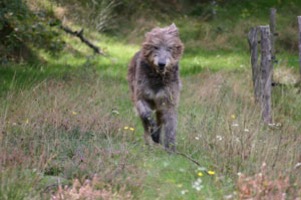
Known as the world’s tallest breed, the gentle Irish Wolfhound has been a symbol of Ireland’s cultural heritage since the late 19th century.
A gentle giant
Tallest breed
Training imperatives
Facts
Personality:
Grooming:
Backyard requirements:
Exercise:
Hereditary diseases:
Breed Contacts
Irish Wolfhound Club of Victoria:
Irish Wolfhound Club of New South Wales Inc.:
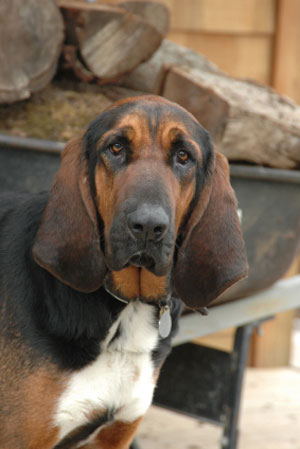
The Bloodhound, at more than a 1000 years old, is one of the oldest Hound breeds.
Affectionate and loyal
Alert and confident
Grooming and genetics
Breed Care
Grooming: Weekly rubdown with glove; eyes and ears checked daily
Exercise: Medium (they require daily exercise)
Size: Large
Lifespan: 6-10 years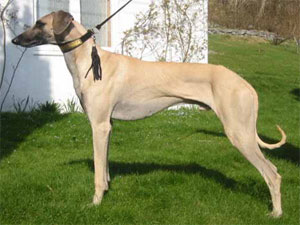
Facts
Breed Care
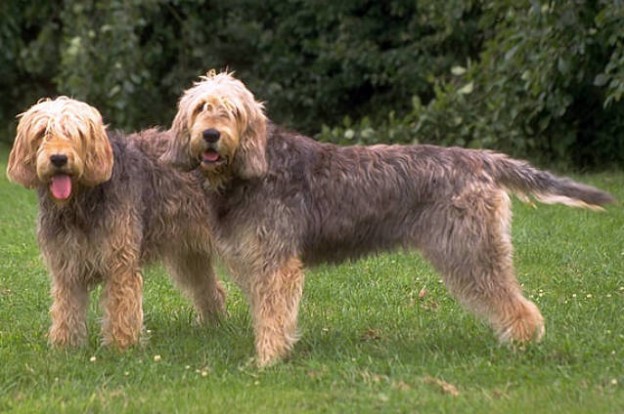
Facts
Breed Care
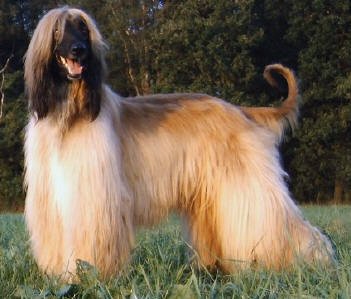
Facts

Breed Care
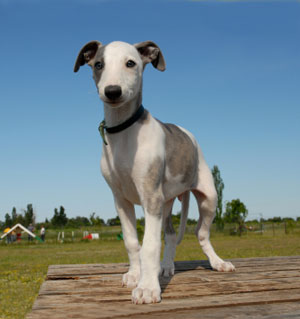
Facts
Unfortunately, the Whippet Club of New South Wales sees more than its fair share of abandoned and dumped Whippets. According to NSW Whippet Rescue, the dogs are given up for various reasons, including people moving house and deciding not to take their dog along, families who have a baby and then give up the family dog, and those who choose a Whippet without adequately researching the breed and its needs.Breed Care
Breed Contacts
Northern Territory: (08) 8984 3570
Queensland: (07) 3252 2661
South Australia: (08) 8349 4797
Tasmania: (03) 6272 9443
Victoria: (03) 9376 2255
Western Australia: (08) 9455 1188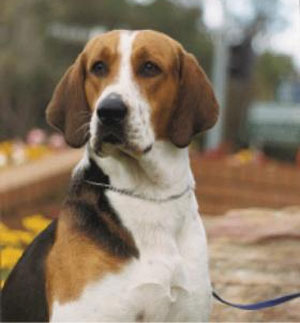
Foxhound
The modern Foxhound is a very sweet and affectionate breed that requires a loving, enriched environment to thrive. It is well known for its loyalty and devotion to family members, making it the perfect addition to any loving home.
They need daily and extensive exercise and will be happiest in a sizeable backyard where they can run. An excellent jogging companion, the Foxhound also loves to go bush walking and hiking. This dog was bred to run for hours across countryside and was capable of running for five to six hours without stopping. Without daily exercise, it will become bored and destructive.
Their short, glossy coat is easy to maintain and keep clean. A daily brush using a hand-grooming glove or comb will remove any dirt from the coat. This breed is an average shedder.Breed Contacts
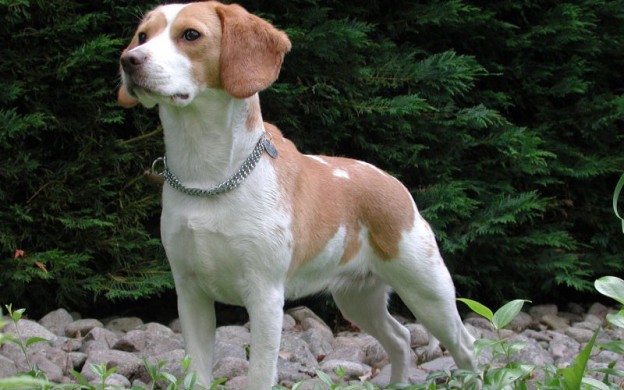
Facts
Care of the breed
DogsLife is proudly powered by WordPress
